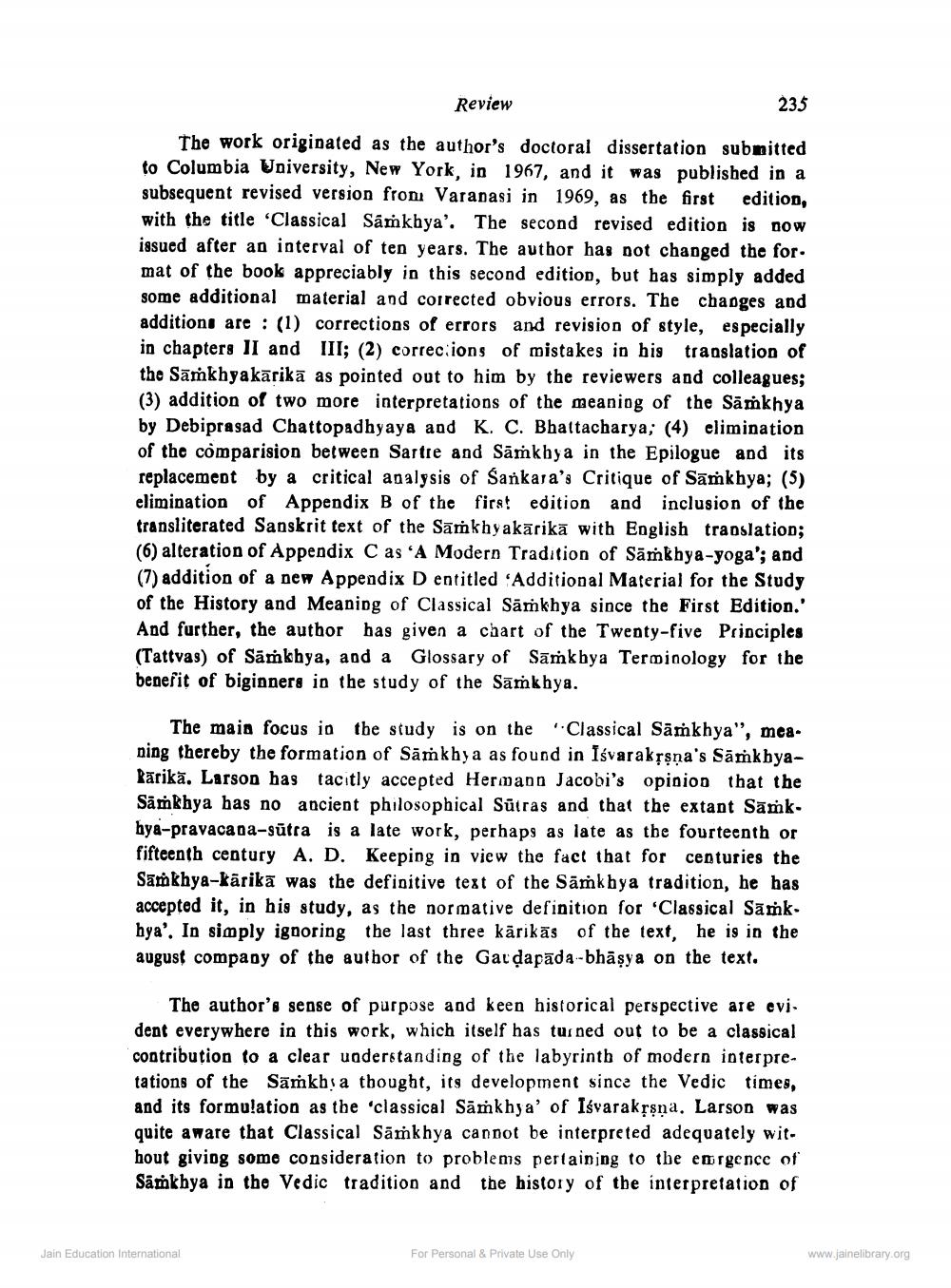________________
Review
235
The work originated as the author's doctoral dissertation submitted to Columbia University, New York, in 1967, and it was published in a subsequent revised version from Varanasi in 1969, as the first edition, with the title 'Classical Sámkhya'. The second revised edition is now issued after an interval of ten years. The author has not changed the for. mat of the book appreciably in this second edition, but has simply added some additional material and corrected obvious errors. The changes and additions are : (1) corrections of errors and revision of style, especially in chapters II and III; (2) correc ions of mistakes in his translation of the Sāmkhyakārikā as pointed out to him by the reviewers and colleagues; (3) addition of two more interpretations of the meaning of the Samkhya by Debiprasad Chattopadhyaya and K. C. Bhattacharya; (4) elimination of the comparision between Sartre and Samkhya in the Epilogue and its replacement by a critical analysis of Sankara's Critique of Sāṁkhya; (5) elimination of Appendix B of the first edition and inclusion of the transliterated Sanskrit text of the Samkhyakārikā with English translation; (6) alteration of Appendix Cas 'A Modern Tradition of Samkhya-yoga'; and (7) addition of a new Appendix D entitled 'Additional Material for the Study of the History and Meaning of Classical Sāṁkhya since the First Edition.' And further, the author has given a chart of the Twenty-five Principles (Tattvas) of Samkhya, and a Glossary of Sāmkhya Terminology for the benefit of biginners in the study of the Samkhya.
The main focus in the study is on the Classical Sāṁkhya", mea. ning thereby the formation of Sāṁkhya as found in Isvarakļşna's Sāmkhyatārikā. Larson has tacitly accepted Hermann Jacobi's opinion that the Samkhya has no ancient philosophical Sūtras and that the extant Samk. hya-pravacaoa-sūtra is a late work, perhaps as late as the fourteenth or fifteenth century A. D. Keeping in view the fact that for centuries the Samkhya-kārika was the definitive text of the Samkhya tradition, he has accepted it, in his study, as the normative definition for 'Classical Sāṁkhya'. In simply ignoring the last three kārikās of the text, he is in the august company of the author of the Gardapada-bhāşya on the text.
The author's sense of purpose aod keen historical perspective are evi. dent everywhere in this work, which itself has turned out to be a classical contribution to a clear understanding of the labyrinth of modern interpre. tations of the Sāmkhya thought, its development since the Vedic times, and its formulation as the 'classical Sāṁkhya' of Isvarakršna. Larson was quite aware that Classical Samkhya cannot be interpreted adequately without giving some consideration to problems pertaining to the energence of Samkhya in the Vedic tradition and the history of the interpretation of
Jain Education International
For Personal & Private Use Only
www.jainelibrary.org




